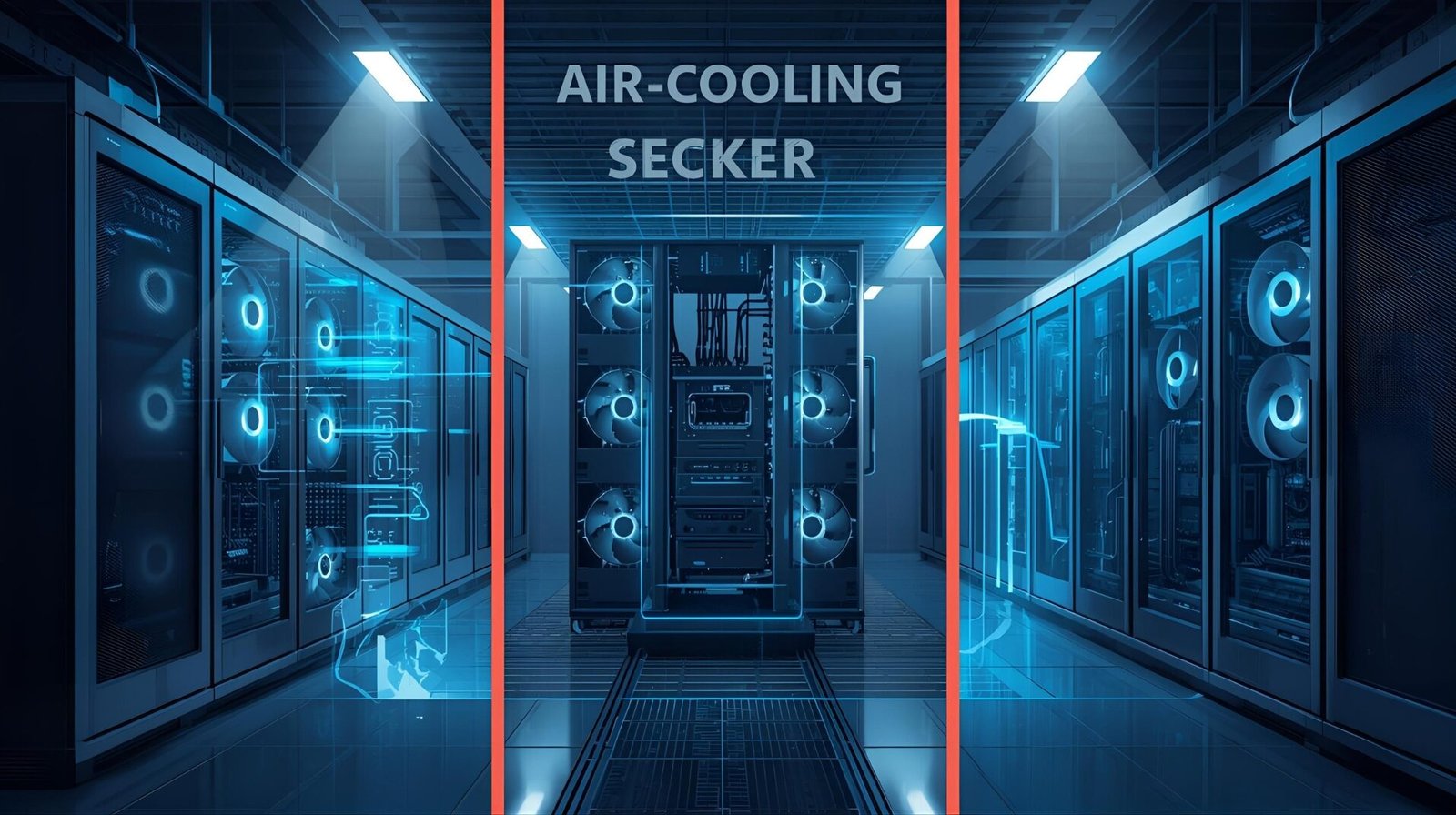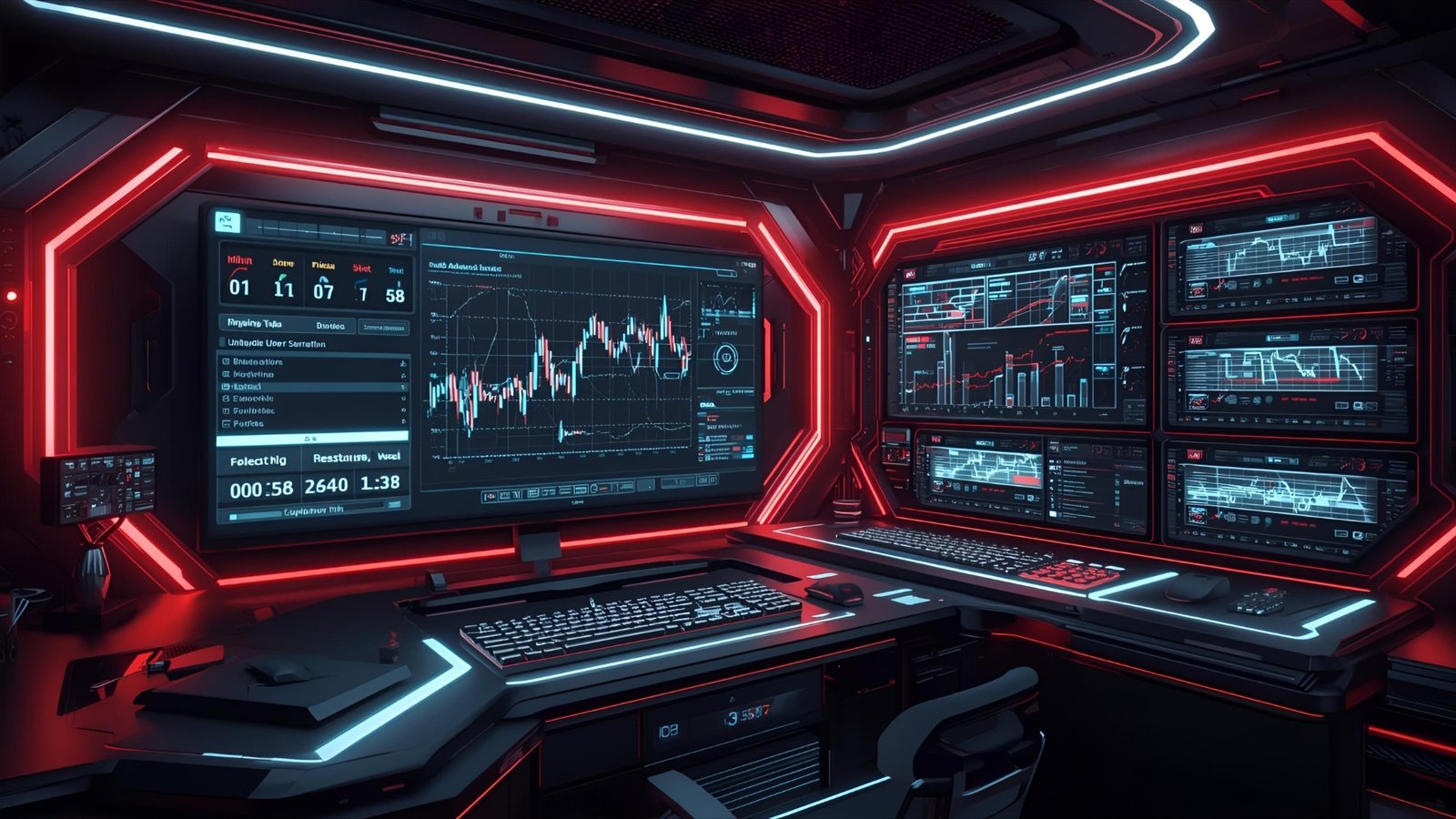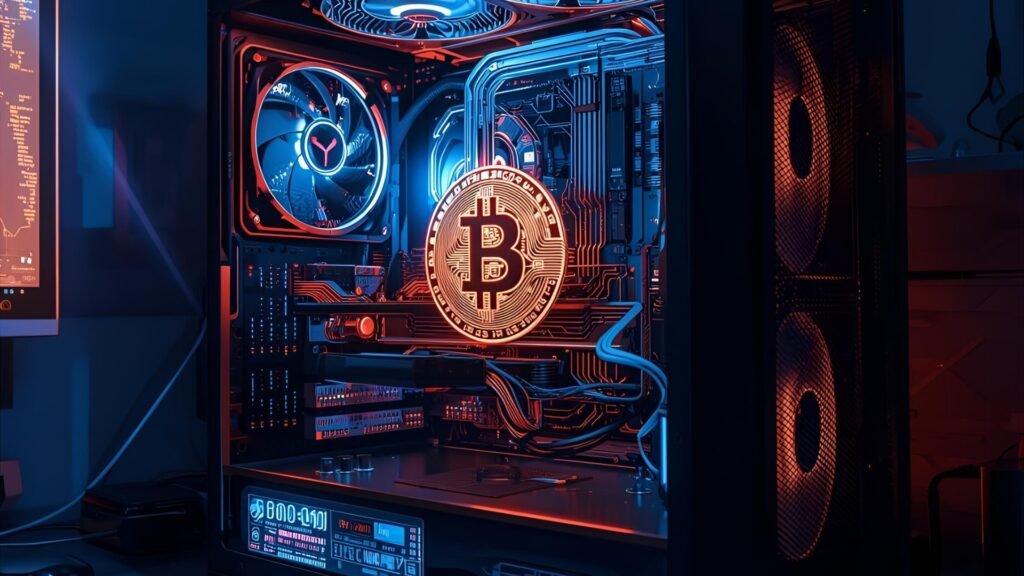Thinking about building a home Bitcoin mining rig setup Done right, it can be an engaging technical hobby with potential to offset your power bill—or, at scale, a real side business. Done wrong, it’s a loud space heater that eats electricity and never pays back. This deep-dive walks you step-by-step through costs, hardware choices, electricity and cooling, pool fees, and—most importantly—the ROI math.
We’ll use up-to-date figures from reputable mining sources and show you exactly how to calculate payback for your situation, while keeping the content smooth, human, and readable. Before we jump in, a quick reality check: after the April 2024 Bitcoin halving, the miner block subsidy dropped from 6.25 BTC to 3.125 BTC per block, cutting base miner revenue in half. That change is permanent and has reshaped profitability across the network.
How Bitcoin Mining Earns: The Short Version
Your miner contributes hashrate to the Bitcoin network to compete for block rewards and fees. The network adjusts difficulty roughly every 2,016 blocks to target ~10-minute block times; if total hashrate rises, difficulty rises and individual earnings fall (and vice versa). In other words, income isn’t fixed—it floats with Bitcoin’s price, fees, network hashrate, and difficulty.
A practical way to estimate revenue is hashprice—the expected earnings per unit of hashrate per day (commonly quoted as $ per TH/s/day). This is maintained by Luxor’s Hashrate Index and is the industry’s standard “miner income” yardstick. You’ll use a current hashprice figure to project revenue for any ASIC you’re considering.
As of late September 2025, industry coverage has described hashprice as hovering near cycle lows—recently quoted around $53 per PH/s/day (≈ $0.053 per TH/s/day). Treat this as a moving target and always look up the latest value before you buy.
Choosing Hardware: Air-Cooled vs. Hydro vs. Immersion

Modern ASIC miners (Application-Specific Integrated Circuits) are purpose-built for SHA-256 and easily outperform any GPU/CPU. Your top priorities: efficiency (J/TH), hashrate (TH/s), and price.
Air-Cooled Workhorses
-
Bitmain Antminer S21 (air-cooled): ~200 TH/s at about 17.5 J/TH (≈3,500 W). It runs on 220–277 V AC. This is one of the most efficient air-cooled options in the retail market and a popular pick for home miners with robust electrical service.
-
MicroBT WhatsMiner M60 family: Models span roughly 170–220 TH/s, with ~19.2–15.5 J/TH depending on variant (M60, M60S, M60S+, M60S++). Vendors and reviews commonly list 186 TH/s @ ~18.5 J/TH for the M60S and ~212–226 TH/s @ ~17–15.5 J/TH for the M60S+ / M60S++ line. Always verify the exact bin you’re buying.
Noise: Air-cooled ASICs are loud. Expect ~75–85 dB at full tilt—think vacuum cleaner or lawnmower territory—which is disruptive in living spaces without sound mitigation.
Hydro and Immersion (Quieter, but More Complex)
-
Hydro-cooled models and immersion-ready units can be far quieter and may run more efficiently, but they require coolant loops, radiators/heat exchangers, and often three-phase power. For example, Bitmain’s S21 Immersion SKU lists 239–301 TH/s with ~16.0–18.5 J/TH and a 380–415 V, three-phase PSU—excellent performance, but not plug-and-play for most homes.
-
Some hydro units target lower acoustic output (marketing claims around ~50 dB on certain models), but factor in pump noise and the logistics of installing water lines and radiators. For many home miners, air-cooled remains simpler despite the sound profile.
The Cost in a Home Bitcoin Mining Rig Setup
Power price makes or breaks profitability. In the U.S., recent EIA data show average commercial prices around ~13 ¢/kWh with state-by-state dispersion; residential rates are typically higher, and many regions have climbed year-over-year. Always check your actual tariff, tiered rates, and time-of-use windows.
That rising electricity backdrop matters to miners: wholesale power forward guidance and press coverage through 2025 has highlighted higher power prices in many regions as load grows (AI/data centers, manufacturing) and fuels fluctuate. If you’re near 10–15 ¢/kWh or more, you’ll need top-tier efficiency and favorable hashprice to break even.
How much power will your rig pull
Power draw ≈ Hashrate × Efficiency.
For an S21 (200 TH/s @ 17.5 J/TH):
200,000 GH/s × 17.5 J/GH = 3,500 W (≈ 3.5 kW), which matches Bitmain’s spec table.
At 3.5 kW, running 24/7 uses 84 kWh/day or ~2,520 kWh/month. Multiply by your $ per kWh for your monthly electricity bill impact.
Heat output equals power draw: BTU/hour ≈ watts × 3.412. A 3,500 W miner throws ~11,940 BTU/hr—like a medium window AC running in reverse. Plan ventilation accordingly.
Noise and Neighbors
Even one air-cooled ASIC can be a neighborhood annoyance if you don’t manage sound. Typical 75–85 dB levels require sound-dampening enclosures, ducting, and ideally a garage or outbuilding—or you pivot to hydro/immersion.
The ROI Formula (And a Worked Example You Can Re-Use)
ROI comes down to four moving parts:
-
Revenue = Hashrate × Current Hashprice (minus pool fee)
-
Power Cost = (Power in kW) × (24 h/day) × ($/kWh)
-
Other OpEx = Internet, filters, maintenance, hosting (if any)
-
CapEx = Miner purchase price + electrical/cooling buildout
Revenue with hashprice: If hashprice = $0.053/TH/day (i.e., $53/PH/day, a level recently cited in industry reporting), and you run 200 TH/s, then:
Revenue ≈ 200 × 0.053 = $10.60/day before pool fees. If your pool takes ~2%, net ≈ $10.39/day. Always plug in the live hashprice, since it fluctuates with BTC price, fees, and difficulty.
Power cost: With 3.5 kW and $0.12/kWh, daily power = 3.5 × 24 × $0.12 ≈ $10.08/day.
Net operating cash flow ≈ $10.39 – $10.08 = $0.31/day—basically breakeven.
Change a single variable and everything swings:
-
If you pay $0.08/kWh, daily power ≈ $6.72 and net ≈ $3.67/day.
-
If hashprice rises to $0.07/TH/day, revenue becomes $14.00/day; with 2% pool fee ($13.72/day) and $0.12/kWh power, net ≈ $3.64/day.
-
If your all-in pool fee is 4%, shave earnings accordingly. Many pools advertise 0%–4% depending on payout method (PPLNS, PPS+, FPPS).
Payback time: If your CapEx is $3,000, and you net $3.50/day, simple payback ≈ 857 days (~2.35 years), ignoring hardware resale value and taxes. If you’re barely breakeven at your power rate and current hashprice, your “ROI” relies on future BTC price/fee upside or a lower electricity tariff.
Tip: Keep a spreadsheet and update it monthly with current hashprice, your exact pool fee, and your real power bill. Use Luxor’s public hashprice index (or its roundup posts) for the current income baseline.
Mining Pools, Fees, and Payout Methods
Joining a mining pool smooths out variance, but you’ll pay a fee that chips away at hashprice. Typical fee ranges are ~1%–4% depending on the payout scheme:
-
AntPool advertises 0% (PPLNS), ~2.5%–4% (PPS+/FPPS) in public guides; the exact fee depends on your chosen mode. Verify the fine print when you sign up.
-
Foundry USA Pool (a large U.S. pool) uses FPPS payouts and markets stability and compliance—useful for consistent earnings assumptions.
Your payout method (PPLNS vs. PPS+ vs. FPPS) changes variance and fee load. For home miners seeking steady cash flow, PPS+/FPPS often makes sense despite higher fees.
House Power, Circuits, and Safety
Most air-cooled S21/M60-class units need 220–277 V circuits; some immersion/hydro rigs need 380–415 V three-phase. Don’t improvise: install dedicated breakers, proper gauge wiring, and correct outlets per manufacturer spec. Bitmain’s S21 spec sheets clearly list acceptable input voltage ranges and current requirements—follow them to the letter.
If you can’t safely support 3–4 kW on a single branch circuit for continuous load, engage a licensed electrician. Heat and dust are relentless; plan filtered intake and directed exhaust to keep chips in their happy temperature band.
Making a Home Rig Livable
At 75–85 dB, an air-cooled ASIC will dominate the soundscape of any room. Hobby miners tame noise with:
-
Sound-dampening enclosures and ducted exhaust to the outdoors.
-
Placement in a garage or outbuilding away from living areas.
-
Hydro/immersion if you’re comfortable with coolant loops and extra capital.
Multiple industry how-tos and vendor guides peg air-cooled miner noise in that 75–85 dB bracket; a handful of hydro units cite ~50 dB marketing claims, but check real-world reports and budget for pumps/radiators.
Legal, Zoning, and HOA Considerations
Bitcoin mining is legal in most places, but local rules can trip you up. Communities increasingly regulate noise, nuisance heat, and industrial equipment in residential areas. Some jurisdictions have experimented with targeted limits or studies around proof-of-work mining, particularly when fossil-fuel plants are used to power operations.
-
New York enacted a two-year moratorium (Nov 2022–Nov 2024) on certain behind-the-meter, fossil-fuel-powered PoW mining permits while conducting environmental studies. Although the moratorium has expired, it’s a cautionary example: rules can change and may differ by locality.
-
Noise disputes have already led to zoning battles (e.g., Tennessee litigation over a noisy mine). Even if you’re not building an industrial farm, be mindful of HOA covenants and municipal codes.
Bottom line: check your local ordinance and HOA before you install, and aim for a setup that is quiet, tidy, and safe.
Building a Practical Home Bitcoin Mining Rig Setup
1) Verify Power and Plan the Circuit
Pick your ASIC first, then design power around it. An S21 on air needs 220–277 V with a ~20 A capable feed; immersion variants may require three-phase. Size wiring and breakers appropriately and put the outlet close to the miner to minimize cord heat and voltage drop.
2) Design Airflow or Liquid Cooling
-
Air-cooled: Provide clean, cool intake and a short, direct exhaust path to the outdoors. Keep intake temps low to avoid fan ramp and extra noise; hotter ambient air raises fan RPM, power draw, and dB.
-
Hydro/immersion: Budget for pumps, radiators, coolant, reservoirs, and proper electrical isolation. Space, maintenance, and leak management are part of the game.
3) Place Your Miner and Tame the Noise
Mount the unit level, ensure unobstructed intake, and use acoustic foam or a purpose-built enclosure if indoors. Keep combustibles away—miners are essentially compact space heaters. Expect ~75–85 dB unless you take noise-reduction steps.
4) Connect Networking and Join a Pool
A wired Ethernet link is best. Pick a reputable pool with transparent stats and fees. Expect ~1%–4% fee depending on PPLNS, PPS+, or FPPS. Read the payout thresholds and coinbase fee-sharing rules—these change your effective income vs. hashprice.
5) Track Earnings with Hashprice and Difficulty
Bookmark Luxor’s Hashrate Index for live hashprice and read their weekly/monthly roundups for context around difficulty adjustments and fee trends. Difficulty and fees can numb or juice earnings independent of BTC/USD.
6) Use a Real-World Profit Model
Update, at least monthly:
-
Hashrate and efficiency from your miner dashboard.
-
Pool fee and any firmware dev fees.
-
Your actual kWh rate and any TOU impacts.
-
Hashprice from a current source.
If you’re on the margin, consider time-shifting (running more during off-peak power windows), firmware tuning for better J/TH, or selling heat (space heating, greenhouse pre-heat) to improve effective economics.
Putting It All Together: Example Scenarios
Scenario A: Suburban Garage, $0.12/kWh, S21 Air
-
ASIC: S21 (~200 TH/s @ ~17.5 J/TH → ~3.5 kW)
-
Hashprice (variable): Suppose $0.053/TH/day (recent reporting)
-
Pool fee: 2% (PPS+/FPPS style)
-
Revenue: 200 × 0.053 = $10.60/day → minus ~2% = $10.39/day
-
Power: 3.5 kW × 24 × $0.12 = $10.08/day
-
Net: ~$0.31/day (breakeven-ish; sensitive to price/fees)
What helps? Lower your effective kWh via TOU, solar net-metering offsets, or switch to a more efficient bin (or M60S++ class) if acquisition price makes sense. Improve airflow to keep fans from ramping (lower dB, slightly lower watts).
Scenario B: Rural Shop, $0.08/kWh, M60S+
-
ASIC: M60S+ (~212 TH/s @ ~17 J/TH → ~3.6 kW)
-
Same hashprice and fee as above
-
Revenue: 212 × 0.053 ≈ $11.24/day; minus 2% ≈ $11.01/day
-
Power: 3.6 × 24 × $0.08 = $6.91/day
-
Net: ~$4.10/day—meaningful, and better with any bump in hashprice or fees on-chain.
Payback math: If CapEx is $3,300, simple payback ≈ ~804 days (~2.2 years), excluding taxes/resale/parts.
Note: Profit swings if BTC price, difficulty, or fee market shifts. It’s common for miners to hedge expected output with hashrate forwards, particularly when hashprice is near lows.
Upgrading and Tuning: Where Advanced Users Find Edge

-
Firmware: Third-party or OEM firmware may unlock performance or efficiency presets. Validate warranty and stability before deploying.
-
Thermals: Cooler intake → lower fan RPM → less power/noise. In hot climates, consider intake pre-cooling or night-only operation if TOU prices allow.
-
Fleet refresh: If you have older S19-era hardware (~34 J/TH), upgrading to ~17–19 J/TH can halve power per TH and slash your hashcost.
Is a Home Bitcoin Mining Rig Setup Worth It in 2025
If your electricity rate is high (≥ $0.12–0.15/kWh), home mining’s ROI is challenging at today’s hashprice—it can still be a great learning project, a space-heater with a subsidy, or a speculative bet on higher BTC price/fees. If you secure cheap power (sub-$0.08/kWh) and buy efficient hardware at fair prices, you can model a reasonable payback—especially if you treat mining as a dynamic operation where you adjust runtime, tuning, or hardware as market conditions change. And always, always validate local rules: noise, zoning, HOA, and any specific restrictions on proof-of-work mining or on-site generation. Make your setup a good neighbor.
SEE MORE: Profitable Bitcoin Mining Rig Setup Cost Guide 2025
Conclusion
A Bitcoin mining rig setup can be smart and satisfying if you approach it like an engineer and a CFO. Choose efficient ASICs (S21, M60 series), design safe power and cooling, and run the ROI math with live hashprice, real electricity bills, and pool fees. Expect noise, heat, and some tinkering. If you can source low-cost power and keep your build tidy, quiet, and compliant with local rules, you’ll stack sats with fewer surprises.
Key takeaway: Profitability today is tight but not impossible. The winners combine great efficiency, cheap or time-optimized kWh, diligent maintenance, and nimble ops that evolve with BTC price, difficulty, and fees. Track those inputs, and your mining rig goes from “space heater” to serious hobby with a plan.
FAQs
Q: What’s the single most important factor for home mining ROI?
Electricity price. Your $/kWh drives daily OpEx more than anything else. With modern efficiency, the difference between $0.08 and $0.14/kWh can flip you from profitable to negative at the same hashprice. Recent reporting and official data show elevated and rising prices in many regions, so it pays to hunt for the best tariff or shift load to cheaper hours.
Q: Which ASIC is “best” for a home Bitcoin mining rig setup?
There’s no universal best—pick by your power rate and circuit. If you can supply 220–277 V easily and handle noise, air-cooled S21 or M60S/M60S+ units deliver top-tier J/TH without immersion complexity. If you need quiet and have the budget and skills, hydro/immersion versions can cut noise and sometimes boost efficiency, but they’re more complex to install.
Q: How loud are air-cooled miners and can I quiet them?
Most air-cooled ASICs run ~75–85 dB at full load. You can reduce perceived noise with sound-dampening enclosures, ducting, and careful placement (garage/shed). If noise is still a deal-breaker, consider hydro/immersion or pause the project.
Q: How do I estimate earnings accurately?
Use Hashprice for revenue: Revenue ≈ TH/s × ($/TH/day), then subtract pool fee and power cost (kW × 24 × $/kWh). Pull a current hashprice from Luxor’s public index or latest roundups, confirm your pool fee, and use your actual utility rate—including TOU tiers.
Q: Did the 2024 halving kill home mining?
No—but it halved the base reward from 6.25 to 3.125 BTC, which tightened margins across the board. Home mining is still possible, especially with cheap power, efficient rigs, and smart operations. It’s just more sensitive to BTC price, difficulty, and fee spikes than before.

















